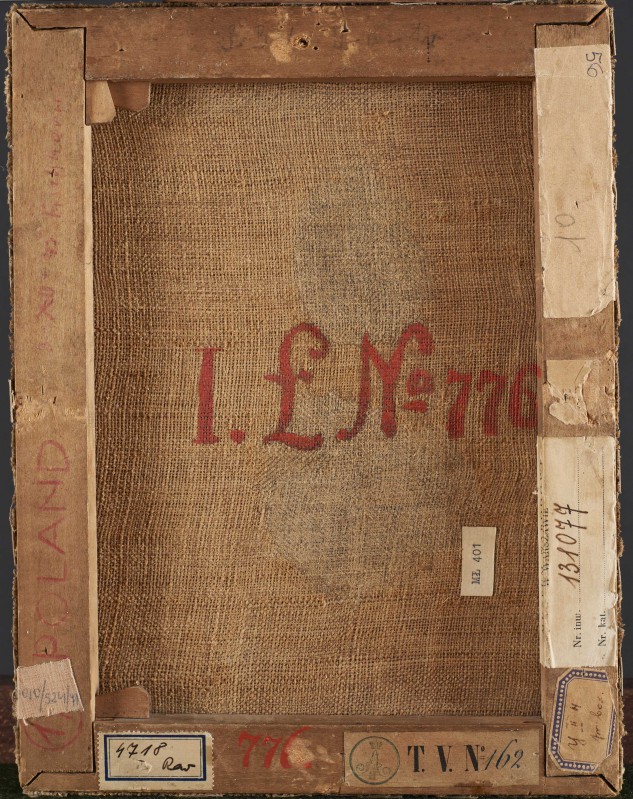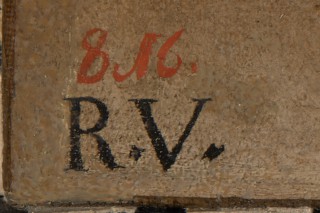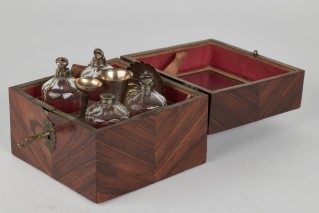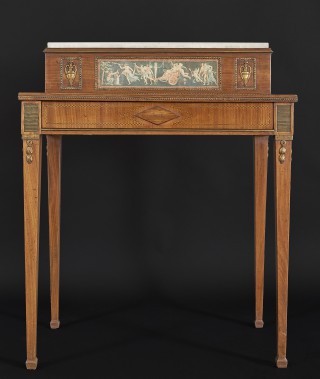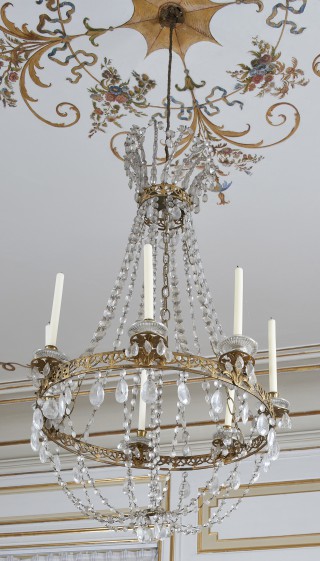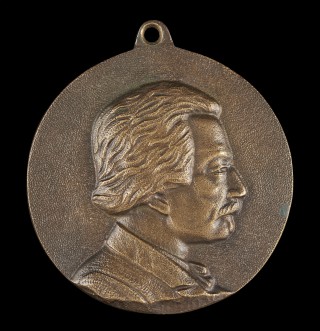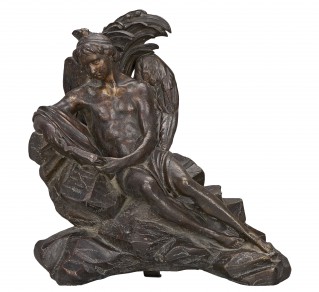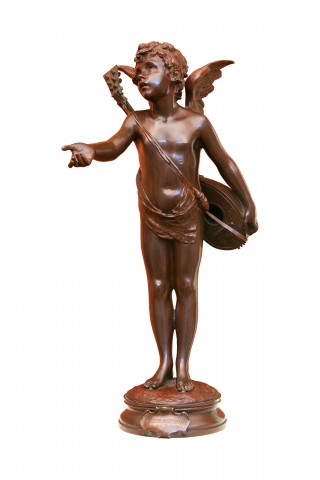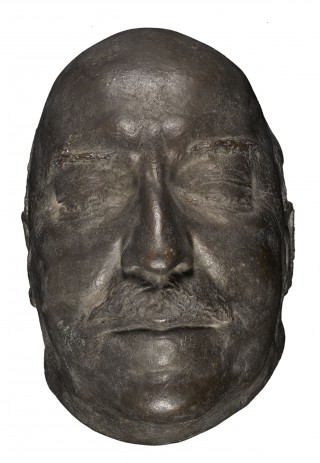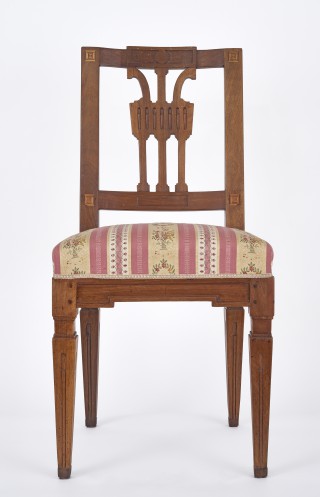Bath of the Infant Jesus
- Date
- 2nd half of the 16th c.
- Object type
- painting
- Technique
- oil
- Material
- paper
- Dimensions
- 28,5 x 21,6 cm
- Acquisition date
- 1783
- Location
- The Palace on the Isle - Hallway, 1st floor
- Marks and inscriptions
- the monogram R.V., bottom left red number 816 of the Stanisław August collection, bottom left
- Place of Origin
- Italy (Europe)
- Owner
- The Royal Łazienki
- Museum number
- ŁKr 951
In the catalogues of the Stanisław August collection and inventories from the 1780s, this composition was incorrectly described as a painted engraving, without naming the author. In the main catalogue of 1795 it was recorded as a copy after Giulio Romano, painted ‘en camayeux’ [en camaïeu].
… . In the 1967 catalogue of the National Museum in Warsaw, the painting was recorded as the work of the ‘Monogrammist R.V’. The technical and iconographic analysis conducted by Maria Wodzińska and Ewa Frynta was published in the 1979 catalogue of the National Museum in Warsaw; the authors considered the painting to be a probable repetition of a lost original by Raphael and proposed the dating to the second half of the 16th century. …
The genre-like presentation of this religious theme was probably inspired by an apocryphal text, e.g. the so-called children’s gospel, although it is not an exact illustration of any of the episodes described there. Raphael is considered to be the author of the theme of the bathing of the Infant Jesus in early modern art, although no such scene painted by him is known. It is possible, as suggested by Grazia Bernini Pezzini … , that c. 1518–20 Raphael proposed the subject which was then executed by his collaborators, Giulio Romano and Giovanni Francesco Penni. In the versions of the subject which are known to us, apart from Mary and Jesus, the young St John the Baptist pouring water into the bath tub (a prefiguration of the baptism of Christ in the River Jordan) and St Elisabeth (at that time believed to be St Anne) preparing clothes to swaddle the Child Jesus are depicted; they are sometimes accompanied by St Joseph. The theme was developed and copied by followers of Raphael, mostly in etchings and engravings, in which the master’s role as the inventor was indicated with the inscriptions … . The association with Raphael is similarly indicated in the Łazienki painting, by the monogram R.V. repeating that of the master … , placed in the left corner. [See D. Juszczak, H. Małachowicz, The Stanisław August Collection of Paintings at the Royal Łazienki. Catalogue, Royal Łazienki Museum, Warsaw 2016, no. 122, pp. 445–447.]


